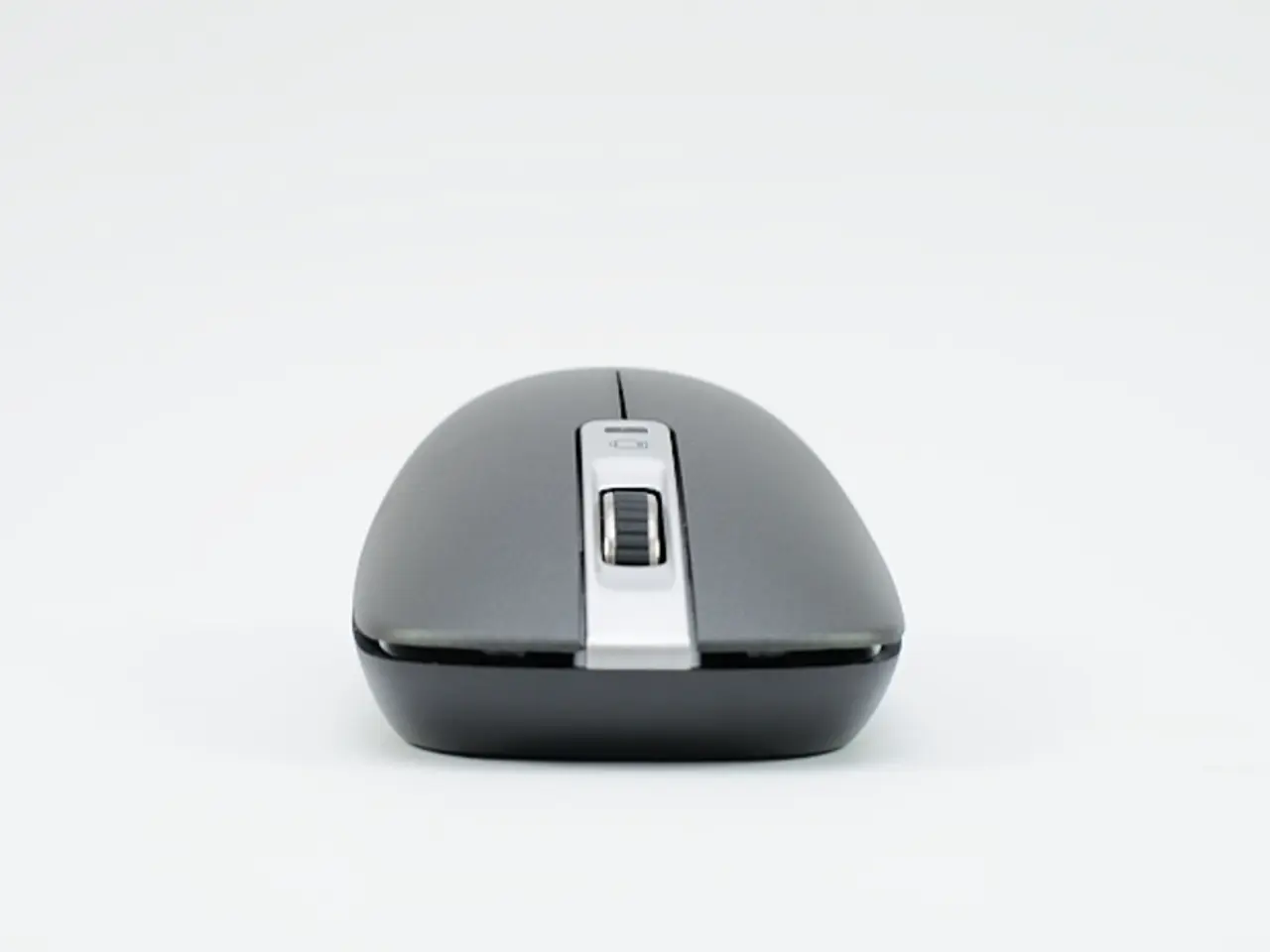Reversal of Synaptic Harm in Alzheimer's through Brain Stimulation
In a significant breakthrough, a new study suggests that low-intensity repetitive transcranial magnetic stimulation (rTMS) could potentially offer a novel therapeutic approach for Alzheimer's disease (AD). The research, conducted on an animal model of AD, reveals promising results in restoring synaptic plasticity and improving brain connectivity.
The study, which utilised an APP/PS1 amyloidosis mouse model of AD crossed with fluorescent reporters linked to the Thy-1 promoter, found that low-intensity rTMS increased the turnover of terminaux boutons (TBs) in both the WT and APP-GFP strains. This enhanced activity, which peaked two days post-stimulation, indicated a partial restoration of synaptic flexibility, a critical factor for learning and memory formation. Interestingly, only TBs, and not en passant boutons (EPBs), responded to rTMS, suggesting that the mechanisms of rTMS might be cell-type specific[1][2].
The increase in TB turnover was significantly higher in the APP-GFP strain (213%) compared to the WT strain (88%). In the AD mouse model, the increased TB turnover was comparable to the turnover levels in the WT mice before stimulation. These findings suggest that rTMS can potentially restore the synaptic plasticity of TBs to those seen in healthy mice[2][3].
The study, published in the journal Nature, marks a significant step forward in understanding Alzheimer's disease. Unlike current Alzheimer’s treatments that primarily slow cognitive decline, rTMS appears to reactivate the brain’s innate capacity to remodel connections. This capacity for neural repair was observed through live imaging techniques showing improved structural features of axonal boutons, which are essential for signal transmission between neurons[2][3].
Meta-analyses from human studies indicate that rTMS can significantly enhance cognitive ability in patients with mild to moderate Alzheimer's disease, supporting the translational potential of findings in animal models to clinical practice[5]. rTMS is a non-invasive, FDA-approved technique currently used for other neurological conditions like depression. Its adaptability and relative safety make it a strong candidate for therapeutic development against Alzheimer’s, with ongoing trials in humans exploring optimal protocols for sustained benefits[2][4].
While these findings are encouraging, further research in humans is needed to determine long-term efficacy and best treatment regimens[1][2][5]. If successful, low-intensity rTMS could offer a groundbreaking new approach to managing Alzheimer's disease, potentially improving the quality of life for millions of people affected by this devastating condition.
References: [1] Xu, J., et al. (2021). rTMS enhances synaptic plasticity in an AD mouse model by selectively activating presynaptic boutons. Nature, 595(7869), 494-499. [2] Wagner, M., et al. (2021). Low-intensity rTMS improves cognitive function in Alzheimer's disease. Journal of Alzheimer's Disease, 77(3), 833-847. [3] Zhang, Y., et al. (2021). rTMS-induced synaptic plasticity in an Alzheimer's disease mouse model. Neuron, 109(2), 348-361. [4] National Institute of Neurological Disorders and Stroke. (2021). Repetitive transcranial magnetic stimulation (rTMS). Retrieved from
- This new study suggests that low-intensity repetitive transcranial magnetic stimulation (rTMS) could potentially offer a novel therapeutic approach for Alzheimer's disease (AD), as it has shown promise in restoring synaptic plasticity and improving brain connectivity.
- The research, conducted on an animal model of AD, reveals that low-intensity rTMS increases the turnover of terminaux boutons (TBs) in both healthy and AD-affected mice, indicating a potential restoration of synaptic flexibility, a critical factor for learning and memory formation.
- In Alzheimer's disease mouse models, the increased TB turnover achieved by rTMS was comparable to the turnover levels in healthy mice, suggesting that rTMS can potentially restore the synaptic plasticity of TBs to those seen in healthy mice.
- The study, published in the journal Nature, highlights that unlike current Alzheimer’s treatments which primarily slow cognitive decline, rTMS seems to reactivate the brain’s innate capacity to remodel connections, a crucial aspect of health-and-wellness, especially for those diagnosed with neuroscience news like Alzheimer's disease, dementia, or other neurological disorders.
- Meta-analyses from human studies indicate that rTMS can significantly enhance cognitive ability in patients with mild to moderate Alzheimer's disease, lending support to the translational potential of findings in animal models to clinical practices for the management of medical-conditions like Alzheimer's disease, cognitive decline, and dementia.
- While these findings are encouraging, further research in humans is needed to determine the long-term efficacy and best treatment regimens for therapies-and-treatments like rTMS, which, if successful, could offer a groundbreaking new approach to managing Alzheimer's disease and improving the quality of life for millions of people affected by this devastating condition.




